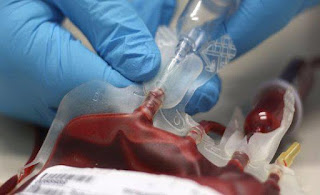Advancements in Spinal Cord Injury Therapeutics: Unlocking New Possibilities
Spinal cord injuries (SCIs) have long been considered one of the most challenging conditions to treat, often resulting in significant disability and reduced quality of life for those affected. However, in recent years, remarkable progress has been made in the field of spinal cord injury therapeutics, bringing hope and new possibilities to patients and researchers alike.
Understanding Spinal Cord Injuries:
Before delving into the advancements, it is crucial to understand the complexity of spinal cord injuries. When the spinal cord suffers damage due to trauma, such as accidents or falls, it can lead to the loss of sensory, motor, and autonomic functions below the injury site. The severity of the injury depends on the location and extent of the damage, with some injuries resulting in partial paralysis, while others cause complete paralysis.
Traditional Approaches to Spinal Cord Injury Treatment:
In the past, treatment options for spinal cord injuries focused primarily on managing symptoms, preventing complications, and providing rehabilitation to improve functional abilities. While these approaches remain essential, they do not address the fundamental issue of regenerating the damaged neural tissue.
Breakthroughs in Spinal Cord Injury Therapeutics:
Neural Regeneration: One of the most exciting advancements is the exploration of neural regeneration techniques. Researchers are studying various strategies to stimulate nerve growth and reconnection, promoting the regeneration of damaged nerve fibers. Techniques such as stem cell therapies, nerve grafts, and bioengineered scaffolds show promise in enhancing neural repair and functional recovery.
Neuroprotection: Injured spinal cord tissue is vulnerable to further damage, primarily due to inflammation and secondary injury processes. Neuroprotective therapies aim to mitigate these processes and preserve as much neural tissue as possible. Promising drugs and interventions are being developed to limit the extent of injury and improve long-term outcomes.
Electrical Stimulation: Electrical stimulation of the spinal cord and peripheral nerves has emerged as an innovative approach to promote motor recovery. Techniques like epidural stimulation and functional electrical stimulation are being studied to activate neural circuits and reestablish communication between the brain and body.
Brain-Machine Interfaces (BMIs): BMIs, also known as brain-computer interfaces, are a cutting-edge technology that holds great potential for spinal cord injury patients. These interfaces can decode brain signals and translate them into commands for external devices, enabling paralyzed individuals to control robotic limbs or computers through their thoughts.
Combining Therapies: Researchers are increasingly exploring the benefits of combining multiple therapeutic approaches. By combining neural regeneration, neuroprotection, electrical stimulation, and BMIs, scientists aim to maximize the potential for recovery and functional restoration in patients with spinal cord injuries.
Conclusion:
The advancements in spinal cord injury therapeutics represent a significant stride towards improving the lives of those affected by these devastating injuries. While a complete cure may not be achievable in the immediate future, the ongoing research and innovative treatments are unlocking new possibilities for spinal cord injury patients. As the scientific community continues to explore these exciting avenues, there is genuine hope that we will witness even more groundbreaking developments in the quest to restore mobility and independence for individuals living with spinal cord injuries.




Comments
Post a Comment